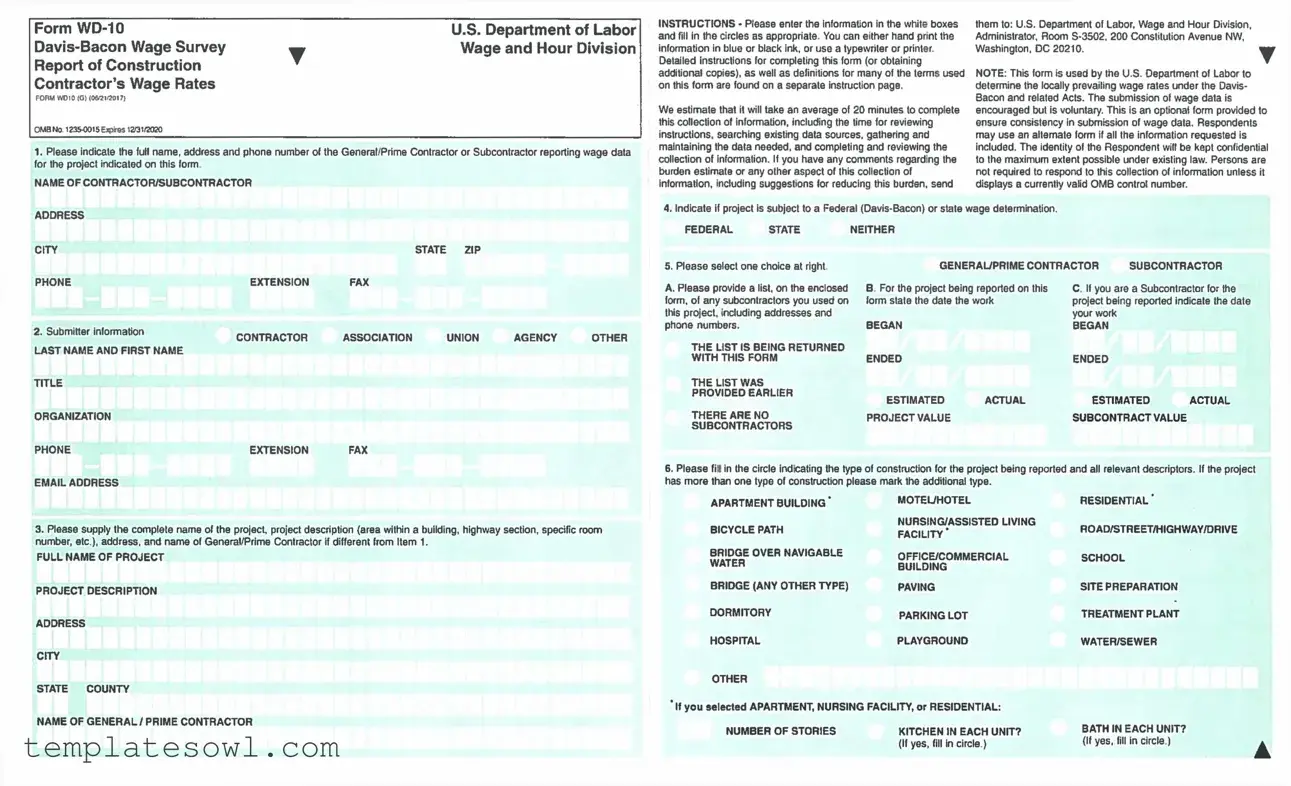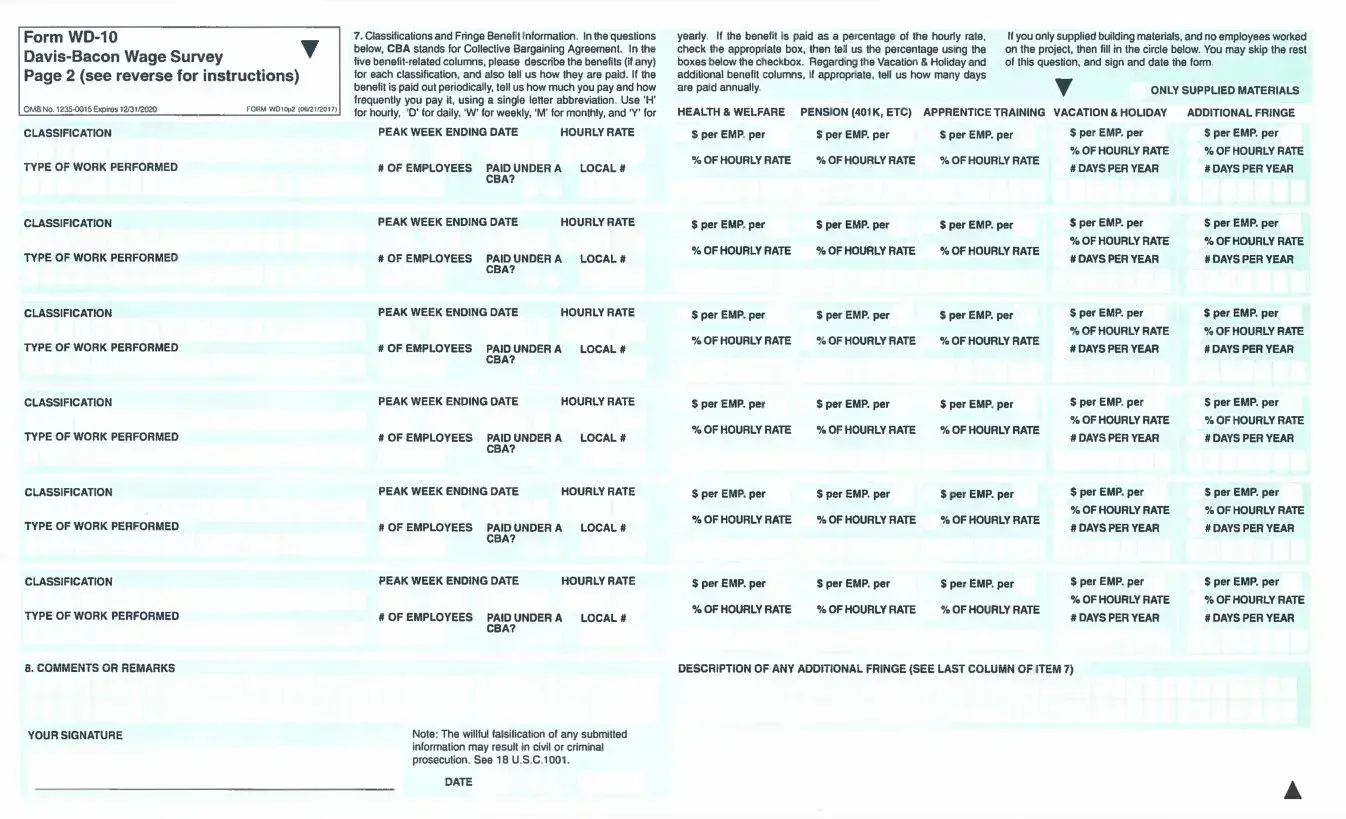When filling out the WD-10 form, many make common mistakes that can lead to delays or complications. Awareness of these mistakes can facilitate a smoother submission process.
One frequent error involves incomplete information. Respondents occasionally skip sections or fail to provide the necessary details, especially in parts like the Contractor Name, Address, Telephone and Project Name, Description, and Location. Omitting these can create confusion and stall the assessment process.
Another issue arises from failing to accurately classify employees. It's crucial to list all classifications employed on the project, including any helpers. In some cases, individuals might group different classifications under one title, which can lead to inaccuracies in wage determination.
Providing incorrect wage data is also a common mistake. For item 13, respondents should specify the basic hourly rate for each classification. Submitting a range or an average instead of a specific amount can result in complications. Similarly, for fringe benefits, it’s essential to list the exact hourly rate or percentages without ambiguity.
Missing signatures can derail the process as well. The form must be signed by the individual submitting it, along with their printed name and title. Inaccessible or omitted contact information creates a lack of accountability and can prolong communication efforts.
Some respondents misunderstand the requirements for subcontractor listings. Only subcontractors involved directly in the project should be included. Listing material suppliers or unrelated entities leads to unnecessary complications and extended processing time.
Another common pitfall is neglecting to indicate whether the contractor is party to a collective bargaining agreement. Selecting the appropriate option for item 10 is vital for proper classification of wages. A mistaken "No" could lead to inaccurate assessments of wage compliance.
Lastly, overlooked deadlines can negatively affect submission. Contractors must ensure they submit their reports timely, particularly as the form collects data from a specific working period. Keeping track of workweek ending dates is essential to avoid confusion.
By avoiding these mistakes, contractors can streamline their experience when filling out the WD-10 form, facilitating a smoother review process and ensuring compliance with wage requirements.


